Random Reviews: Dreadstar (vol. 1): The Metamorphosis Odyssey
A thoughtful narrative unleashes a creator's imagination beyond the bounds of mainstream superhero comics
—by Nathan on September 4, 2025—
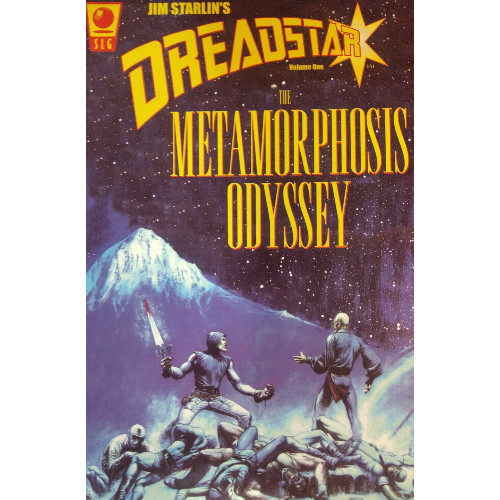
In the early 80s, Marvel Comics dabbled in what they called "a new experience in adult fantasy and science-fiction adventure": Epic Illustrated. An anthology in a magazine format not subjected to the Comics Code, Epic Illustrated was an experiment for the popular comic company to produce material akin to adult-oriented stories found in fellow American comics magazine Heavy Metal. Low sales and the expenses required to produce the magazine eventually led Marvel to cancel it after four years, right before John Byrne could wrap up a ten-part Galactus story, but the concept was reborn a few years later through Epic Comics (not to be confused with the company's more modern Epic Collections), a new imprint focused on producing creator-owned material.
Part of the first nine issues of Epic Illustrated were given to the story we are reviewing today: "The Metamorphosis Odyssey," the first part in Jim Starlin's ongoing sci-fi saga titled, uh, The Metamorphosis Odyssey. Let's go with what the cover says: this is the first installment of Starlin's ongoing narrative featuring title character Dreadstar. That is, Vanth Dreadstar, our sword-wielding hero who finds himself a pawn of a being called Aknaton, whose fairly crazy scheme either promises to rescue the universe…or condemn it to total eradication.
Y'know, what cosmic type heroes call "Monday."
Dreadstar (vol. 1): The Metamorphosis Odyssey
Writer: Jim Starlin
Penciler: Jim Starlin
Inker: Jim Starlin
Letterer: Tom Orzechowski
Issues: Epic Illustrated #1-9
Volume Publication Date: August 2000
Issue Publication Dates: February 1980, May 1980, August 1980, November 1980, February 1981, April 1981, June 1981, August 1981, October 1981
Publisher: Epic Illustrated (Marvel Comics imprint, original magazines); SLG Publishing (collected edition)
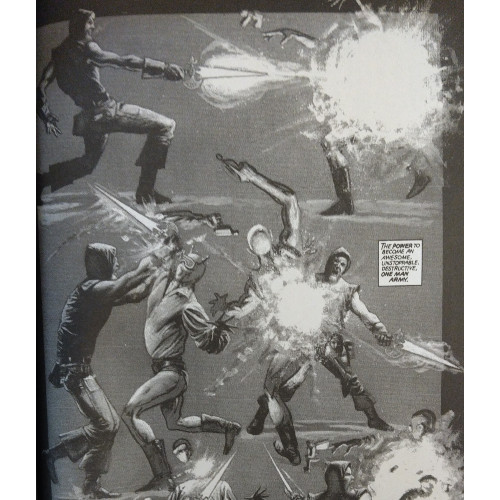
When I think "sprawling space saga," there are few comic creators outside of Jim Starlin who come to mind, and I probably couldn't list anyone better. Sure, I'm not the biggest fan of his other "Odyssey" story for DC, the very middling Cosmic Odyssey limited series, but the man wrote and illustrated the heck out of classic 70s series Captain Marvel and Warlock and delivered the ever-fantastic Infinity Gauntlet. Just forget the sequels aren't all that impressive, even if Infinity Crusade is the reason why I'm reviewing this other Marvel narrative from Starlin today.
Starlin had built up goodwill with readers through Captain Marvel and Warlock, I'd imagine, and he parlays that goodwill into a story which didn't require the same constraints as his typical Marvel work. Without the Comics Code looking over Epic's shoulder, Starlin could deliver a tale more suited to older, mature readers, in ideology if not in content…because if you look at our main hero in the Metamorphosis Odyssey, you'll find a character not wholly unlike Starlin's most well-known villain, the Mad Titan Thanos.
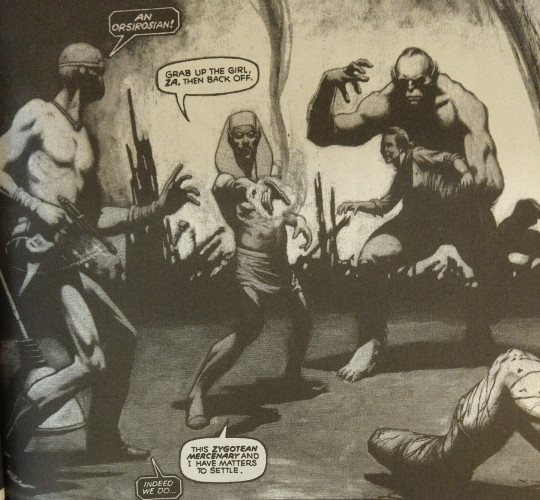
Aknaton is the last survivor of the planet Orsiros, one of many planets conquered, plundered, and destroyed by the invading Zygoteans, and his quest to destroy his hated enemies propels the narrative forward. Readers will no doubt see shades of Starlin's other work in this narrative–the Zygoteans are not wholly (or maybe "holy"?) dissimilar from the Universal Church of Truth, the invasive institution led by Warlock's villainous alter ego the Magus; both groups brutally conquer planets and put their people to chains, their destruction and will spreading across galaxies in a seemingly endless and unstoppable hunger for power and resources. That the Zygoteans obliterate planets once they're finished with them only adds to the stakes Starlin crafts–we're not just dealing with millions of innocent lives enslaved but wiped from existence.
To this end, Aknaton has sewn a scheme well before the Zygoteans reach his homeworld, and once Orsiros is destroyed, he acts on that scheme to stop the invaders. His solution? Total galactic annihilation, a big ol' reset button for the universe…also not dissimilar from Starlin's other work, particularly the plots of Thanos to destroy whole galaxies as he courts Death. Where Aknaton diverges from the Mad Titan, however, in that he presents his plan as a seemingly gracious and merciful solution to stopping the unstoppable. He's no nihilist, and through his arguments, he provides even the slimmest idea that, just maybe, his designs are worth following.
You probably wouldn't have seen support for galactic Armageddon in a typical Marvel comic, I assume.
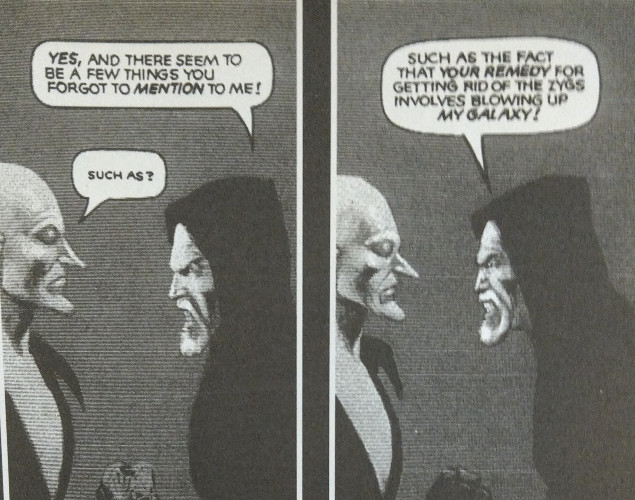
This is one of the facets which allows for The Metamorphosis Odyssey to stand out from its kid-centric peers at the age. Starlin is able to dabble in ideas you would normally frown at; not that Starlin would be a proponent of universal devastation, I would guess, but he's free to have the idea pop out of the mind of one of the guys labeled a protagonist in this comic. This doesn't need to be a comic where the lines between righteousness and wickedness are easily drawn or where the hero absolutely has to be on the side of life to also stand on the side of goodness. Moral compromise exists at the heart of this story. The bad guys really seem unstoppable, and without the sudden insertion of a deus ex machina type god, hero, or weapon, maybe the only way they can be defeated is through a large-scale sacrifice.
Maybe. The question is, at least, explored.
Vanth Dreadstar, it appears, is meant to present a balance to Aknaton's ideas. He's a driven warrior and a decent pilot, armed with a powerful sword Aknaton himself planted thousands of years before. Looking kinda like a space-faring Oliver Queen, Vanth is the human side of the plot, hired as a bodyguard yet with greater willpower than you'd find amongst random hired thugs. Drawn from his native planet, Vanth finds himself embroiled in the chaos of outer worlds and the darkness which the Zygotean threat brings–not just planetwide death but more personal pains, such as loss and suicide. He remains, not a lightly hopeful person, but a determined warrior, driven by the belief that a better solution may bring about the end of Zygotean influence upon the galaxy. Introduced as a second protagonist, Vanth quickly becomes the guy we want to cheer and root for, the guy who doesn't equate salvation with annihilation.
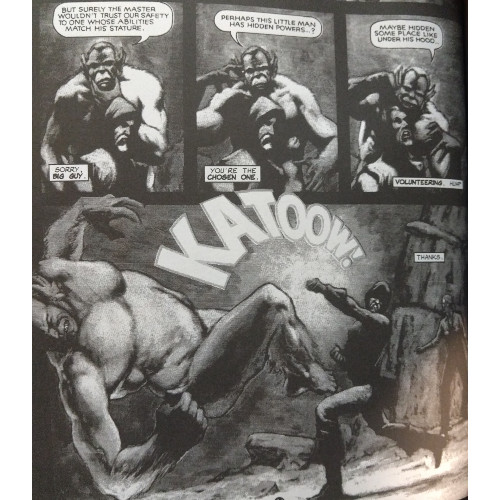
The influence of space operas, such as Starlin's own work and specifically George Lucas' Star Wars, are not completely lost on the Odyssey. "Vanth Dreadstar" sounds like a name ripped straight from that galaxy far, far away, and his capabilities with a sword and as a pilot make him seem like a blend between fated warrior Luke Skywalker and lovable ruffian Han Solo. To Starlin's credit, Vanth is already a professional bounty hunter by time we meet him, an expert with the sword he's found, meaning we're able to skip past all the preliminary training or montages which often come with a beginning hero's journey. He's seen cruelty, he's experienced pain already, and so he dives in, his convictions already formed.
This Odyssey doesn't feel like it copies, necessarily, any part of Star Wars, through you may point to a chase sequence featuring Vanth's smaller ship blasting its way through Zygotean cruisers and destroying a larger vessel called a "dreadnaught" as feeling fairly familiar. The sequence is intended to bolster respect for Vanth as the true hero of the piece, especially after a scene where he has come to verbal blows with Aknaton over his plan. Trust is built into the reader after Vanth escapes deadly peril, highlighting him as the narrative's guiding light, even if it's Aknaton who has pulled everyone together.
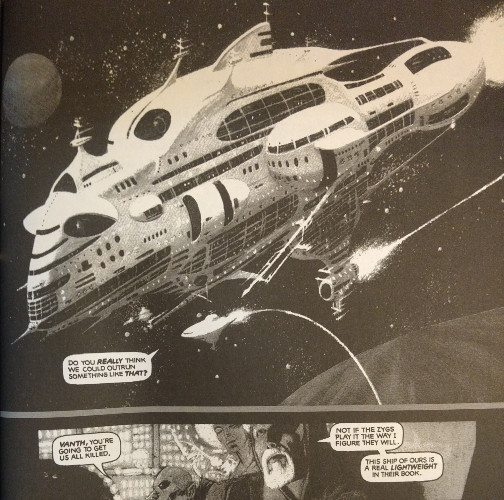
Starlin's other characters, important as they are to the plot, feel sidelined in terms of development. Though introduced in interesting manners–Za, for example, belongs to a cannibalistic race yet finds he is not drawn to the basic, reactionary, animalistic instincts of his predacious people–these supporting cast members are set aside in favor of Dreadstar, the bodyguard who becomes protagonist. Their importance is never diminished, yet how they begin and end the tale feels utterly inconsequential to the whole. Each character is given internal conflicts–Za, his search for meaning outside basic survival; Whis'par, her nagging doubts in her religion; and fifteen-year-old Earthling Julie, mourning the loss of her family at the blasters of the Zygoteans. Though each conflict is introduced, each possibility for growth planted, none of the seeds sprout into personal change. Perhaps these characters are developed more significantly in further chapters of Starlin's saga, which I may review in the future, but they feel somewhat static here, used more for plot purposes.
The Metamorphosis Odyssey is pure Starlin, the creator firing on his powerful imagination without having to stick to established continuity. There seem to be some nods to other sci-fi sources, such as Star Wars and Starlin's previous work, but they're wrapped around an original story with original characters. The universe, as it often is in Starlin's stories, is at stake, from both an invading swarm of aliens and one of the seeming protagonists bent on saving the galaxy through its destruction. You probably won't look back at other Marvel comics published in 1980 and find Thor arguing the merits of destroying the universe or Captain America advocating for the wholesale slaughter of some folks to save others. Starlin's characters are allowed these grimmer outlooks, yet even within the dour demeanors presented, a glint of hope, faith, and salvation glimmers in Vanth's eyes, providing the necessary balance to keep Starlin from plunging into nihilism. I think of Epic Illustrated, as well as the Epic Comics imprint which followed, as Marvel's version of Vertigo, producing more mature, creator-owned material that feels different than anything else in their catalogue. I know I like reviewing titles in Marvel's 616 timeline, but this story should show that we can find other universes to explore than just the one crowded with capes and cowls.